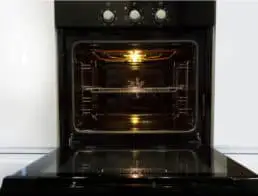Are you in the market for a DLP or LCD projector? You might be trying to figure out which you should opt for and what the difference is between them.
Whether you want to watch home movies, display videos for a group meeting, or have a big display for video calls in the office, you want your projector to work smoothly. Depending on your circumstances, a DLP projector might suit you best—or an LCD projector could be the better option.
Here’s everything you need to know.

What’s the Difference Between a DLP vs. LCD Projector?
A DLP projector uses a digital micromirror device. 1 It’s small and portable, offering higher contrast and smoother video than an LCD projector.
An LCD projector sends light through a prism, splitting into the 3 primary colors. 2 It uses less power than a DLP projector and may provide a sharper image. It’s normally quite bulky.
Both types of projectors are affordable for home use, though DLP projectors tend to be a little pricier than LCD projectors. You can simply pick one of the best projectors under $200, if you’re on a tight budget.
What Are the Advantages of a DLP Projector?
DLP projectors offer:
- High contrast images. That means that blacks will look properly black, not just grey (as with LCD projectors).
- Sharp, crisp images due to the small size of pixels.
- High light output, due to the use of mirrors.
- Easy maintenance, due to the filter-free and sealed chip design. 3
- Easy portability, as they’re light and compact.
What Are the Disadvantages of a DLP Projector?
The main drawback to using a DLP projector is what’s called the “rainbow effect”. This is where you see a rainbow in light areas of the image.
Why does this happen? The DLP projector uses a transparent disk that’s divided into different primary colors. Some projectors only have 3 segments (1 red, 1 green, and 1 blue), each taking up a third of the disk. This means that as the disk turns, you might see the breakdown of colors rather than the white that’s created by the merging of the different colors of light. 4
It’s worth noting that this problem is most obvious with old, cheap projectors. Many people also don’t notice the effect at all, and others will only notice it in certain circumstances—such as when moving their heads rapidly.
If you’re not sure whether the rainbow effect will bother you, try borrowing a DLP projector to see how it works before buying—or make sure you’re buying one that you can easily return if needed. 
Image courtesy of Pexels
What Are the Advantages of an LCD Projector?
LCD projectors also have a number of advantages, including:
- A precisely focused image, meaning you can get a sharp, clear image. This is particularly important if you want to show detailed slides, e.g. when sharing data.
- A brighter image, due to more color saturation.
- A lower price tag than most DLP projectors (though note that a budget DLP projector will cost much less than a high-end LCD projector).
- Generally, more accurate colors than a DLP projector, which could be important—e.g. if you need to precisely show brand colors in a company presentation.
What Are the Disadvantages of an LCD Projector?
LCD projectors are bulkier than DLP ones, meaning they’re not a great option if you’re going to need to transport them around from place to place. They can also suffer from “dead pixels”, where a pixel stops working. You’ll likely not notice a single dead pixel—but lots of them could really spoil your viewing experience.
LCD projectors are also expensive to replace if components fail, which happens more frequently than with DLP projectors. You’ll also need to maintain the air filter, cleaning it regularly (around every 100 hours of use), and replacing it when needed.
What Type of Projector is Right For You?
Neither an LCD nor DLP projector is necessarily “better”—the right option depends on your circumstances and what you plan to mainly use the projector for.
If you’re on a tight budget and won’t be moving your projector around much, then an LCD projector probably makes the most sense. This could suit community groups, schools, and religious organizations. Do be prepared to spend time on maintenance, however.
If you’ve got a bit more money to spend, then a DLP projector may be the best option for you—especially if you need it to be portable and/or low maintenance. Bear in mind, though, that you’ll very likely be able to find a quality projector in your budget, regardless of your choice.
Ultimately, both LCD and DLP projectors solve the same problem: they let you project an image from your laptop or another device onto a wall or canvas screen. In most circumstances, either option could work fine, so don’t worry too much if you’re not certain which is best for you — simply pick a projector that fits your budget, regardless of type.
Article Sources
Home Life Daily uses only high-quality sources, including peer-reviewed studies, to support the facts within our articles. Read our editorial process to learn more about how we fact-check and keep our content accurate, reliable, and trustworthy.
- DLP products—Getting started. Texas Instruments. Accessed October 14, 2021.
- Lamb, Robert. How LCD Projectors Work. Howstuffworks.com. Accessed October 14, 2021.
- Wyatt, Andrew. Understanding The Differences Between LED, LCD and DLP Projectors. The Best In Tech. Accessed October 14, 2021.
- What is the DLP Rainbow Effect? The Projector Expert. Accessed October 14, 2021.










